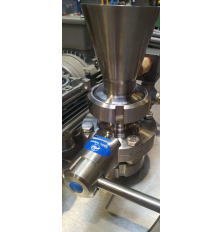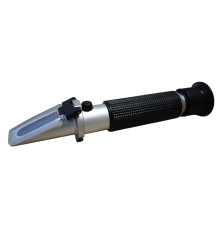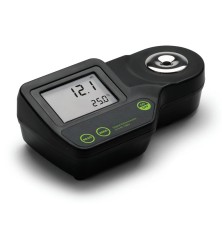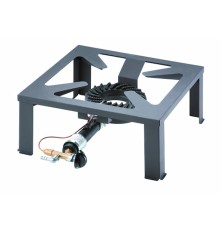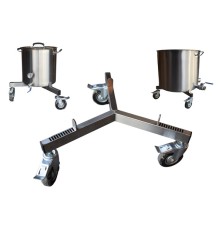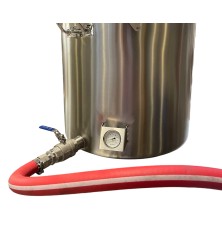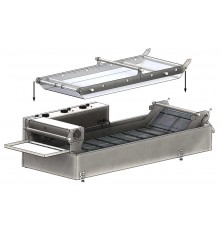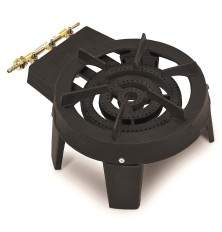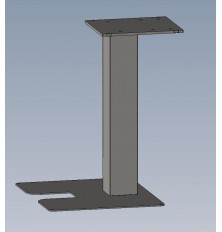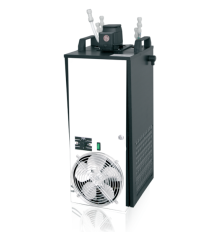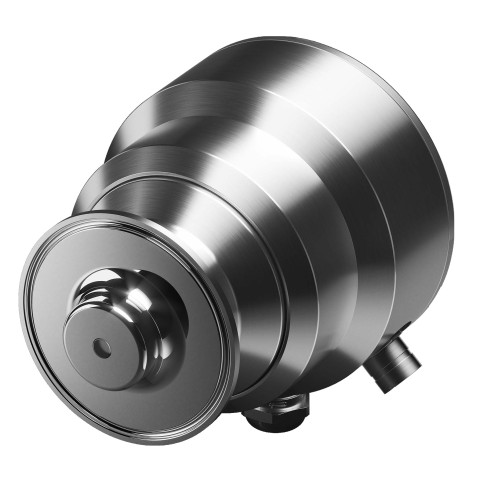



Refractometer for condensed milk production
In the production of condensed milk, a refractometer is used to accurately determine the solids content of the product, which is essential for meeting production standards and ensuring compliance with legal regulations.
Sweetened condensed milk is produced by evaporating milk to reduce its water content and adding a sweetener, which can be sucrose, dextrose, or any other natural sugar.
This product was originally invented as a method of preserving milk. The sugar content in sweetened condensed milk increases the osmotic pressure to a level that eliminates most microorganisms.
Sugar is added either as a dry solid before evaporation or as a syrup during the process. Precise control of the added sugar amount is crucial, as the shelf life of the milk depends on maintaining a sufficiently high osmotic pressure. The sugar content in milk typically ranges from 62.5% to 64.5%.
A refractometer is used to standardize the product, ensuring the exact solids content required to meet legal standards. Accurate TDS (Total Dissolved Solids) measurements in fresh milk also help determine the precise amount of sugar that should be added before or during the evaporation stage.
Refractometer readings taken after evaporation can be used to fine-tune the evaporators and achieve the desired milk concentration.
If the production process includes a homogenization stage, a refractometer can also be installed afterward. It detects fat globules when their size is smaller than 6 ┬Ąm, a threshold that can be reached by adjusting the homogenizer pressure. The recommended primary homogenizer pressure is P1 = 26 MPa (260 bar).
The refractometer can be calibrated to display measurements in either Brix or Total Dissolved Solids (TDS), depending on the factoryŌĆÖs preference. Additionally, it features Ethernet and 4-20 mA output signals, which enable real-time process control.
Refractive index (nD): 1.3200 ŌĆō 1.5300 (corresponding to 0ŌĆō100 Brix).
- Type of the equipment: Optional equipment
Additional option to VMG laboratory vacuum homogenizer 20/50.
- Material: Stainless steel
- Type of the equipment: Optional equipment
Analogue refractometers offer an efficient, accurate, and easy-to-use solution for measuring Brix levels and ensuring product quality in the food industry.
- Type of the equipment: Optional equipment
Thermal insulation of the drying cabinet body to reduce heat loss during product drying. Additional option for the MAK DRYER 7-14.
- Type of the equipment: Optional equipment
Within seconds, the device measures the refractive index of the sample and converts it to % of solids using the concentration unit.
The refractometer is ready for use after a simple user calibration with deionized or distilled water.
A frequency converter is an electrical device that adjusts the frequency of an input power source to control the speed and torque of electric motors, commonly used in industrial applications like pumps, fans, and conveyor systems.
- Power: 0.75 kW
- Input Voltage: 1 phase, 230 V, 50/60 Hz
- Rated Output Current: 4.5 A
- Output Frequency: 0 to 999.9 Hz
- Protection Rating: IP65
- Type of the equipment: Optional equipment
- Voltage: 380-400V
Compact, reliable, and easy to use. The frequency converter ensures smooth starting and stopping of the device's motor, reducing inrush currents, and adjusting the motor speed. It can also be connected to your smartphone via Bluetooth for convenient configuration and parameter adjustment.
Key benefits:
- Precise digital control at the touch of a button.
- Application macros.
- Switch between Industrial, Pump, and Fan modes for optimized operation.
- It is used and mounted directly on the equipment, eliminating the need for electrical cabinets. It can also be wall-mounted.
We also offer programming and installation of the frequency converter to ensure seamless integration and optimal functionality for your equipment.
- Type of the equipment: Optional equipment
The durable single gas stove serves a versatile purpose, suitable for heating large cooking kettles. 7 kW.
- Heating: Gas
- Heating power, kW: 7
The sturdy mobile base for large pots, with a diameter ranging from 405 mm to 625 mm, is designed to support and easily transport our 50L, 100L and 150L cooking kettles.
- Made out of stainless steel
- Features casters with brakes on each wheel for secure handling
- Universal model for pots with diameters from 405 to 625 mm
- High load capacity - up to 200 kg
- Material: Stainless steel
- Type of the equipment: Optional equipment
Designed for the demanding requirements of the beer and beverage processing industry, this pressure suction food hose offers exceptional safety, durability, and compliance with international food standards. It is ideal for the transportation of high-quality raw, pasteurized, and organic beer, as well as a variety of other beverages, including wine, soft drinks, and alcoholic drinks.
- Type of the equipment: Optional equipment
Additional option for the VMG laboratory vacuum homogenizer 20/50.
- Type of the equipment: Optional equipment
Optional module for the 400/1100/12 universal tabletop Modular Fryer - Pressure Conveyor for frying foods that require forced immersion in oil.
- Material: Stainless steel
Compact and powerful gas stove with 3 rings designed for the connection to standard LPG cylinders. Ideal for heating large volumes of liquid, cooking soups or sauces in cooking kettles, and maintaining meal temperatures during preparation or service. The sturdy, open-frame design ensures excellent stability and high load capacity for everyday use in catering and food processing.
A hot oil filter for continuous industrial tabletop fryers allows you to quickly and effectively filter oil immediately after the frying process.
- Hot oil filtration - oil temperature up to 200 ┬░C.
- Optional filter material - paper, stainless steel
- Material: Stainless steel
- Country of origin: Slovakia
Stand (support structure) for colloid mill machine - additional option for the colloid mill 132
- Type of the equipment: Optional equipment
A chiller is a cooling machine that removes heat from a liquid through vapor compression and absorption in a cyclic manner.
- Principle of operation: Continuous mode
- Cooling performance l/h: 100 / 200 l/ 300
A large three-section basket for vacuum fryers, cooking kettles and other batch processing equipment.
- Material: Stainless steel
- Type of the equipment: Optional equipment













